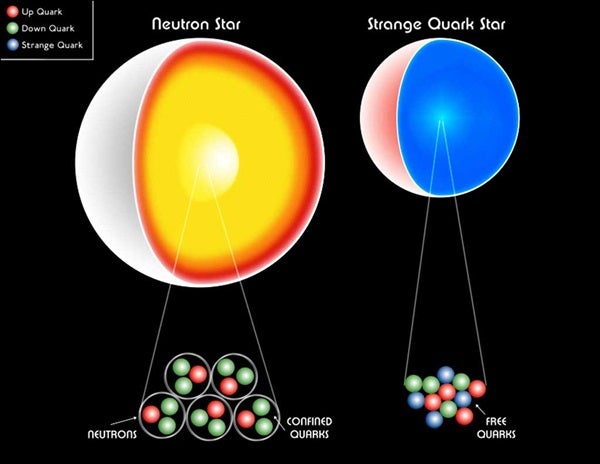One resulting hypothesis is that certain unusual stars could be made entirely of such matter — hence the name “quark stars.” Such objects likely would share many observational properties with neutron stars but, for example, would have no minimum mass (whereas neutron stars are likely more than 1.1 times the Sun’s mass) and would generally be smaller than neutron stars of the same mass because they’re denser.
There is currently no strong evidence that quark stars exist; however, some observations suggest they may.
For example, scientists using data from NASA’s Chandra X-ray Observatory reported that the nearby neutron-star candidate RX J1856.5–3754 has an X-ray spectrum consistent with a source whose radius is between 2.4 and 5.1 miles (3.8 and 8.2 kilometers) — that’s too small to be a neutron star. This observation prompted Jeremy Drake of the Smithsonian Astrophysical Observatory and colleagues to title their publication “Is RX J1856.5–3754 a Quark Star?” The general consensus among the astronomical community is “not particularly likely.” This response is largely because of uncertainties in the assumptions that the authors made in their spectral analysis, and thus the object may not be as small as reported. Still, RX J1856.5–3754 is intriguing.
In summary, while we don’t have strong evidence for quark stars’ existence, there is still some possibility that they’re out there but can’t yet be unambiguously identified.
McGill University, Montreal










